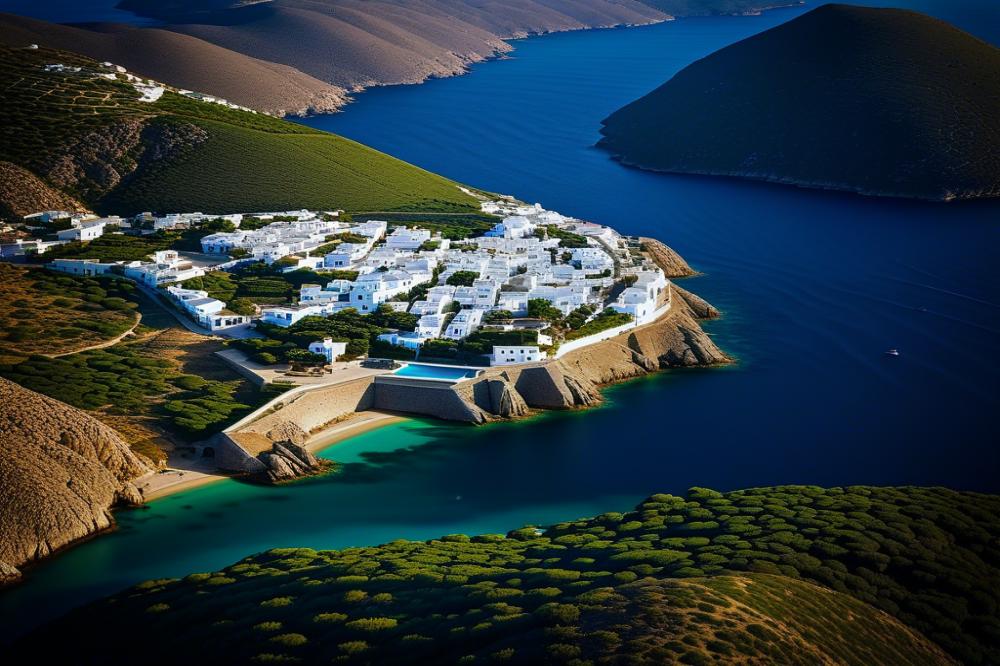Exploring the UNESCO World Heritage Sites of Patmos
Have you ever dreamt of wandering the serene landscapes of a Greek island? Picturesque and tranquil, this tiny island in the Aegean Sea captivates visitors with its charm. Patmos is not just a beautiful destination; it is also steeped in deep history. This island has gained recognition for its remarkable cultural heritage, making it a must-visit location.
UNESCO World Heritage Sites hold immense significance. They showcase human achievement and promote the need to preserve the world’s exceptional places. Patmos is home to sites that display stunning monastic architecture, which draws travelers interested in both history and spirituality. Visitors can marvel at the magnificent structures that reflect the religious significance tied to the Apostle John, who spent years here, shaping the island’s spiritual landscape.
When it comes to holiday adventures, Patmos offers an experience unlike any other. The island attracts tourists seeking both relaxation and exploration. Many embark on spiritual pilgrimages, engaging with the rich traditions and stories that fill the air. Whether lounging by the crystal-clear waters or exploring ancient paths, the island provides ample opportunities for unforgettable memories. The combination of its UNESCO designation and natural beauty makes this location a prime spot for those traveling through the Aegean Sea.
Patmos: A Cultural Heritage and Spiritual Pilgrimage

Historical Background of Patmos
Patmos is a small island located in the Aegean Sea. Its history dates back to ancient times. The island played a significant role during the Roman Empire. Over the years, it has been shaped by various cultures. It has a rich tapestry of stories and traditions. Visitors can feel the weight of its past in every corner. Exploring its winding paths offers glimpses into its historic significance. Numerous heritage sites attract those who love history and culture.
Importance of Apostle John and Religious Significance
The Apostle John is closely linked to Patmos. He is said to have been exiled here for his faith. While on this island, he wrote the Book of Revelation. This act has given the place its spiritual importance. Pilgrims come from around the world to connect with his legacy. The religious significance of this site cannot be underestimated. Many see it as a holy place where heaven touched earth. The influence of Christianity is evident throughout the island, from chapels to ancient monasteries.
Overview of Patmos as a Destination for Spiritual Pilgrimages
Patmos has become a hotspot for spiritual pilgrimages. Travelers visit the island seeking peace and reflection. Monastic architecture adds to its serene atmosphere. The UNESCO designation highlights its importance as a cultural heritage site. Tourists can immerse themselves in a world of faith and history. Each year, thousands make the journey to honor the Apostle John. This island is not just a destination; it serves as a retreat for the soul. An experience here is often described as enlightening and transformative.
UNESCO World heritage sites: A Focus on Patmos

UNESCO designates sites that hold significant cultural or natural importance. The process involves thorough evaluation and listing by experts. These heritage sites are recognized globally. Greece is proud to harbor several of these treasures. Locating a site’s value involves assessing its history, architecture, and more. Only the most profound places earn this prestigious title.
Highlighted Sites on Patmos
Among the prominent sites is the Monastery of Saint John the Theologian. This remarkable structure draws visitors from all over due to its religious significance. Additionally, the Cave of the Apocalypse is also noteworthy. These locations represent a blend of spiritual pilgrimage and historical presence. Travelers are often captivated by the stories that surround them.
Description of the Monastery of Saint John the Theologian
Built in the 11th century, the Monastery showcases magnificent monastic architecture. The Apostle John, a key figure in Christianity, spent time here. Visitors admire its stunning frescoes and serene courtyards. Inside, one can find rare artifacts that tell stories of faith. The structure stands not just as a religious site but also as part of the cultural heritage of the island.
Exploring the Cave of the Apocalypse
The Cave of the Apocalypse holds great allure for those interested in religious history. This sacred place is believed to be where St. John received his divine revelations. Dark stone walls and a humble atmosphere invite contemplation. Pilgrims often leave inspired after visiting this site. Its iconic significance has made it a key attraction in the Aegean Sea region.
Monastic Architecture and Its Influence

Characteristics of Monastic Architecture in Patmos
Monastic architecture in this island displays a blend of simplicity and grandeur. Stone walls, often thick and sturdy, serve both aesthetic and practical purposes. Many buildings have flat roofs, designed to withstand harsh weather. Narrow pathways connect the structures, creating an intimate atmosphere. This design encourages reflection and meditation, fitting for a place tied to faith. The use of local materials ensures harmony with the surrounding landscape. Religious significance is evident in every detail, making it a unique architectural style.
The Architectural Significance of the Monastery of Saint John
The Monastery of Saint John stands as a vital example of Byzantine architecture. Its massive walls communicate strength and power, built to protect the community. Inside, visitors find ornate chapels and vibrant frescoes that depict biblical scenes. This monastery, founded by the Apostle John, speaks to centuries of devotion. UNESCO designation highlights not just its beauty but also its role in cultural heritage. Pilgrims come from afar, drawn to its spiritual ambiance and historical depth. This site serves as a cornerstone of religious life, influencing architecture throughout Greece.
Cultural Influences Reflected in the Island’s Buildings
Various cultures have left their mark on the island’s architectural styles. Byzantine design merges with elements from the Venetian period and later Ottoman influences. These layers of history enrich the visual experience for tourists today. Each building tells a story, showcasing techniques and materials from different eras. Local craftsmanship skills shine through in intricate details. The impact of these diverse influences creates a captivating environment. Visitors often wonder how architecture can unite centuries of faith and daily life. This unique blend enhances the island’s appeal for spiritual pilgrimage and exploration.
Tourism and the UNESCO Legacy

The impact of UNESCO designation on tourism is clear. Such recognition helps draw travelers to the island. Many visitors are eager to explore the rich heritage sites. These sites offer a glimpse into the past, where history and spirituality converge. Each year, tourism flourishes, boosting the local economy.
Exploring these heritage sites can be an unforgettable experience. One can wander through ancient monasteries, taking in their serene atmosphere. The spiritual pilgrimage to the Cave of the Apocalypse, where the Apostle John is believed to have received divine revelations, attracts many pilgrims. Every stone here tells a story of faith and devotion.
Travelers can enjoy various activities that relate to the cultural heritage of the island. Guided tours often reveal secrets of monastic architecture. Cooking classes allow visitors to learn about traditional Greek cuisine. Art workshops foster a deeper understanding of the local crafts and customs in this part of Greece. These experiences connect people to the rich history surrounding them.
Tourism in this vibrant location goes beyond just sightseeing. Engaging with local communities enhances the overall journey. Visitors can attend religious festivals, gaining insight into the living traditions. This kind of interaction fosters appreciation for the island’s cultural heritage.
The allure of the Aegean Sea adds to the appeal for travelers. Clear blue waters and stunning views complement the exploration of heritage sites. Many find joy in relaxing under the sun after a day of discovery. The combination of relaxation and inspiration makes each visit worthwhile.
Wrapping Up Your Journey
A Spiritual and Cultural Treasure
Patmos stands out as a remarkable blend of spiritual, historical, and cultural heritage. This enchanting island, known for its stunning landscapes and rich traditions, invites travelers to connect with both the past and present. Visitors can immerse themselves in unique experiences that reflect the island’s deep roots in Christianity and its historic significance. Each corner of the island tells a story, from ancient monasteries to beautiful chapels.
Discover the UNESCO World Heritage Sites
Exploring the UNESCO World Heritage Sites on this island is a must. These remarkable landmarks showcase the craftsmanship and dedication of those who came before. Taking the time to visit these sites offers insight into the island’s importance throughout history.
Adventure Awaits in Greece
Think about adding Patmos to your list of holiday adventures in Greece. This hidden gem offers plenty of opportunities for relaxation and exploration. Discover charming villages, enjoy delicious local cuisine, or take in breathtaking views from the hills. Travelers often find that this little island leaves a big impression.
In conclusion, allow yourself to be captivated by the heritage sites and the stories they hold. The combination of spirituality and history creates an atmosphere unlike any other. Whether you seek tranquility or adventure, Patmos awaits with open arms. Don’t miss out on what this extraordinary place has to offer!



